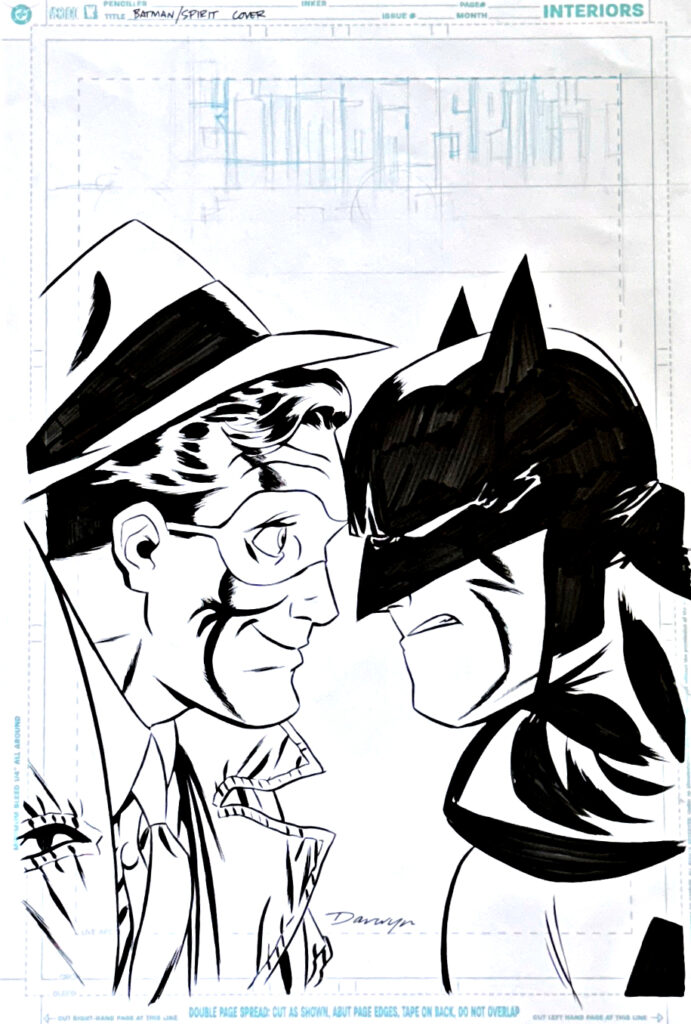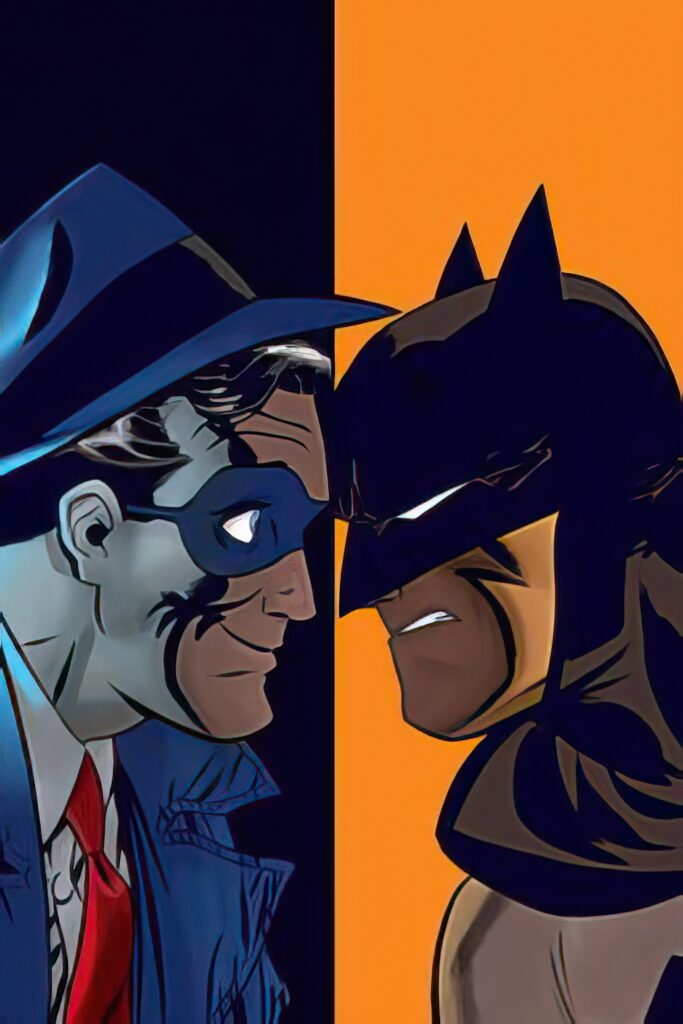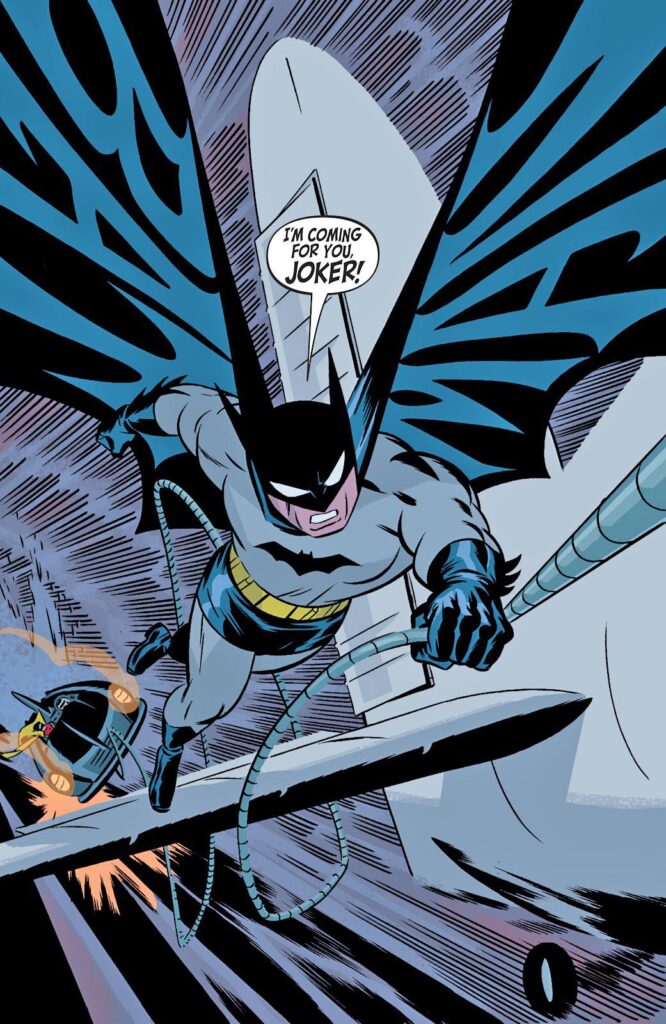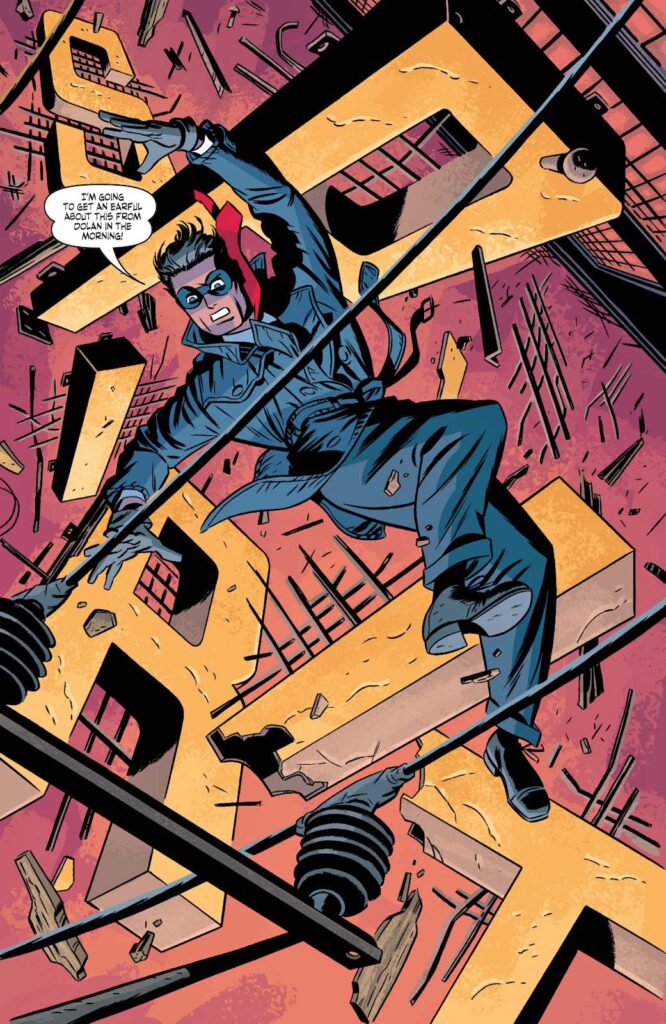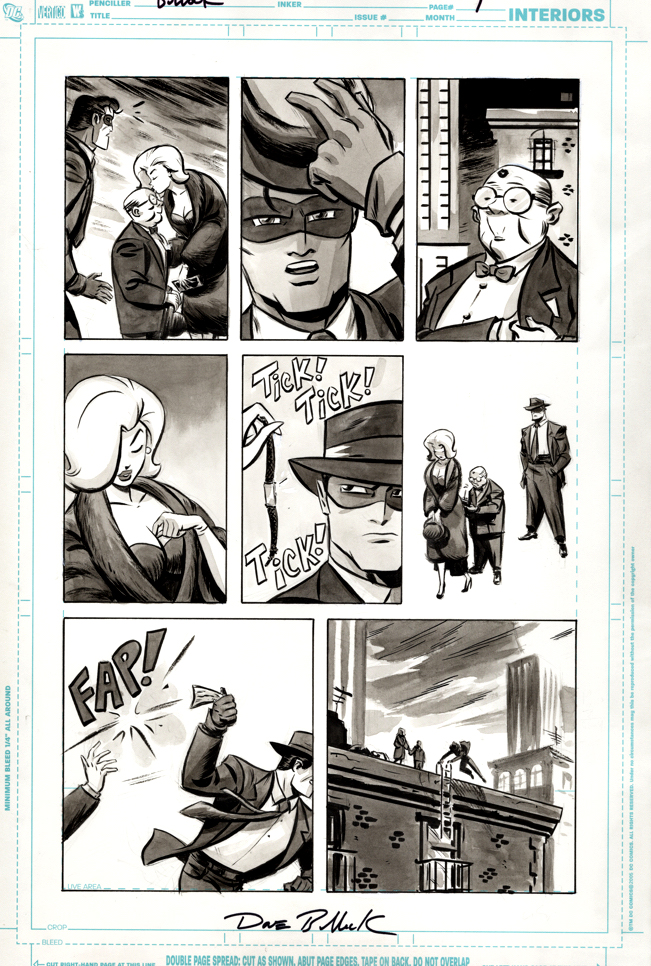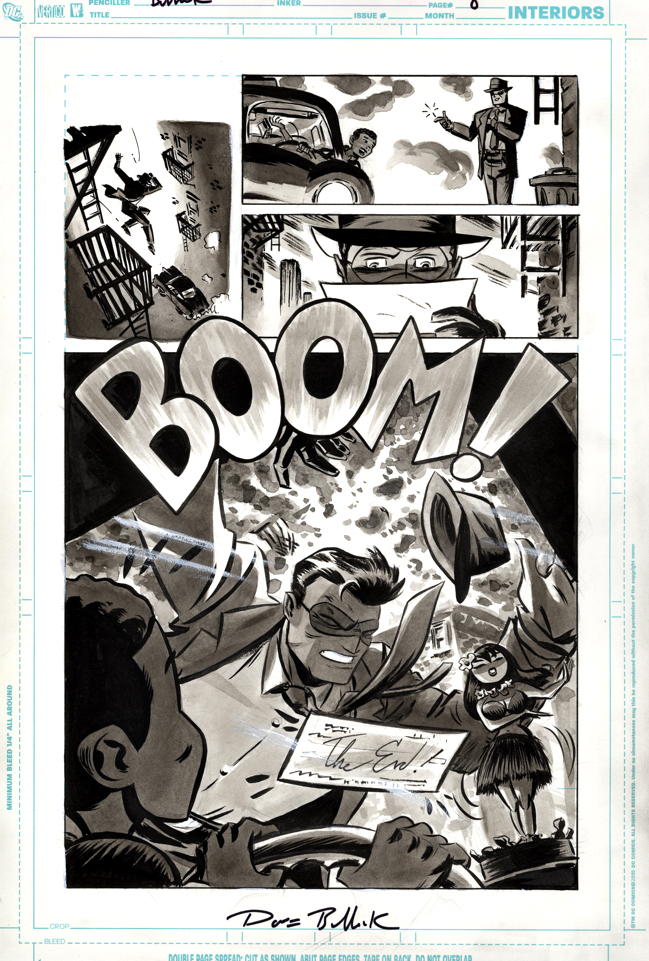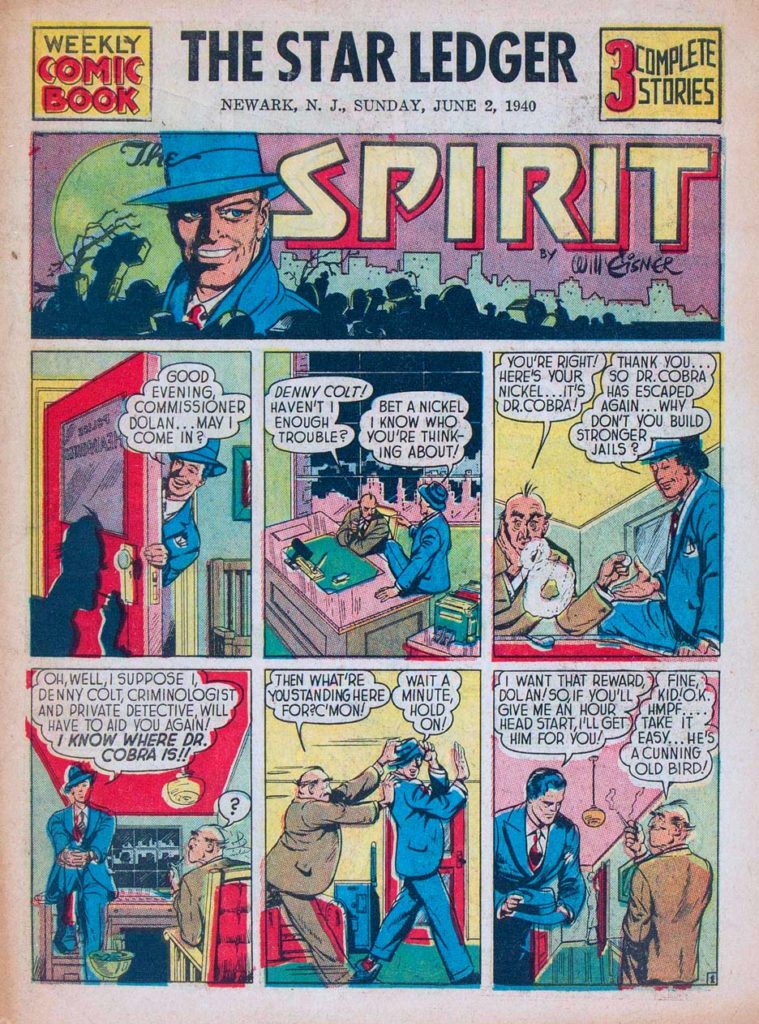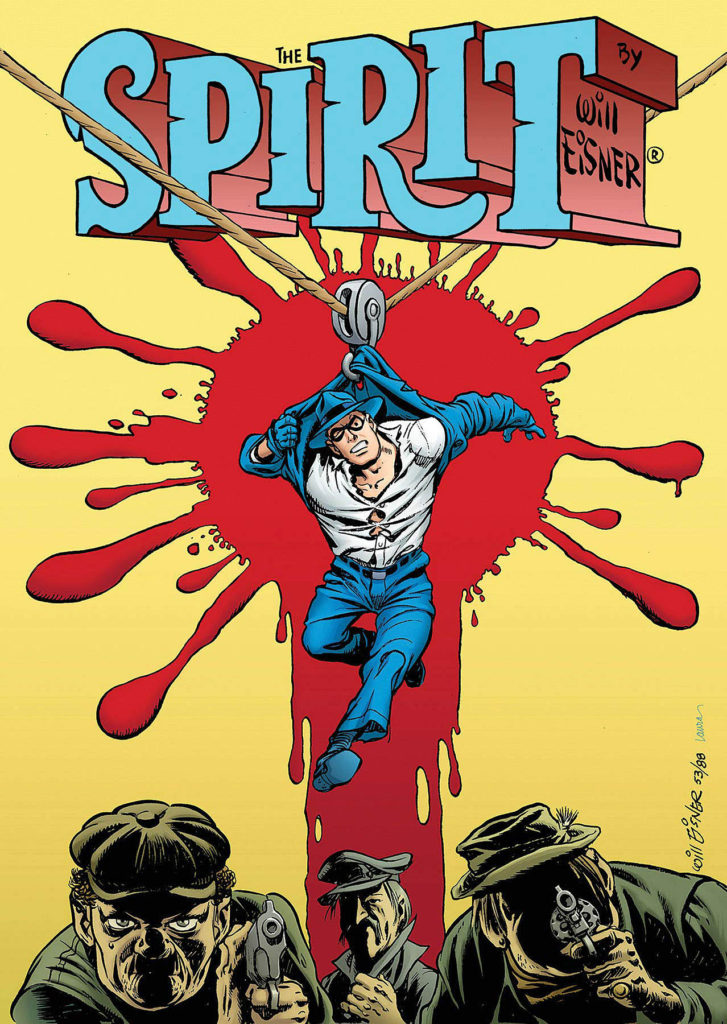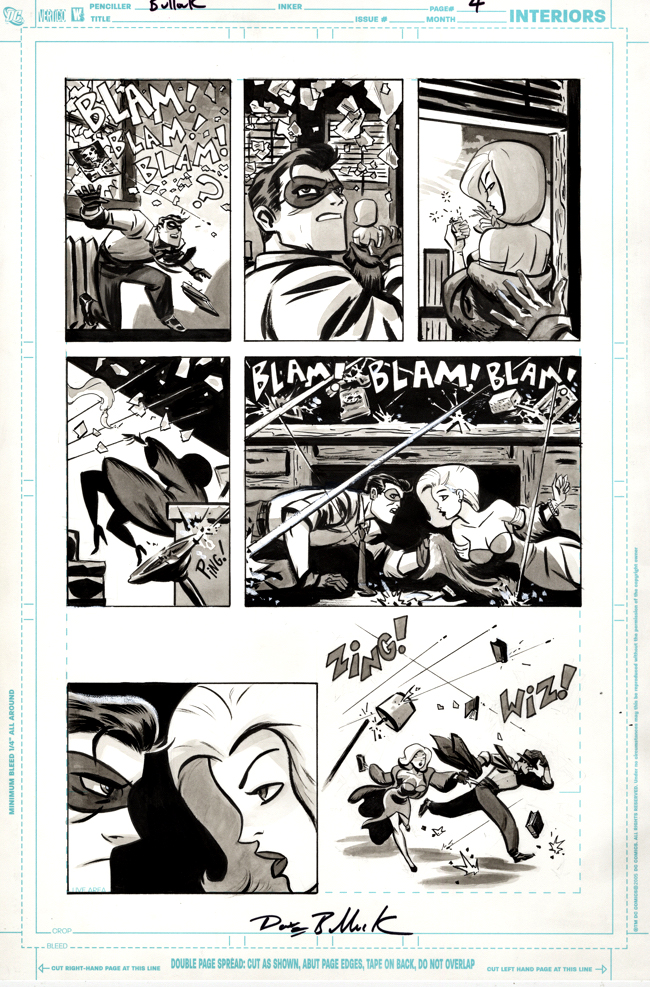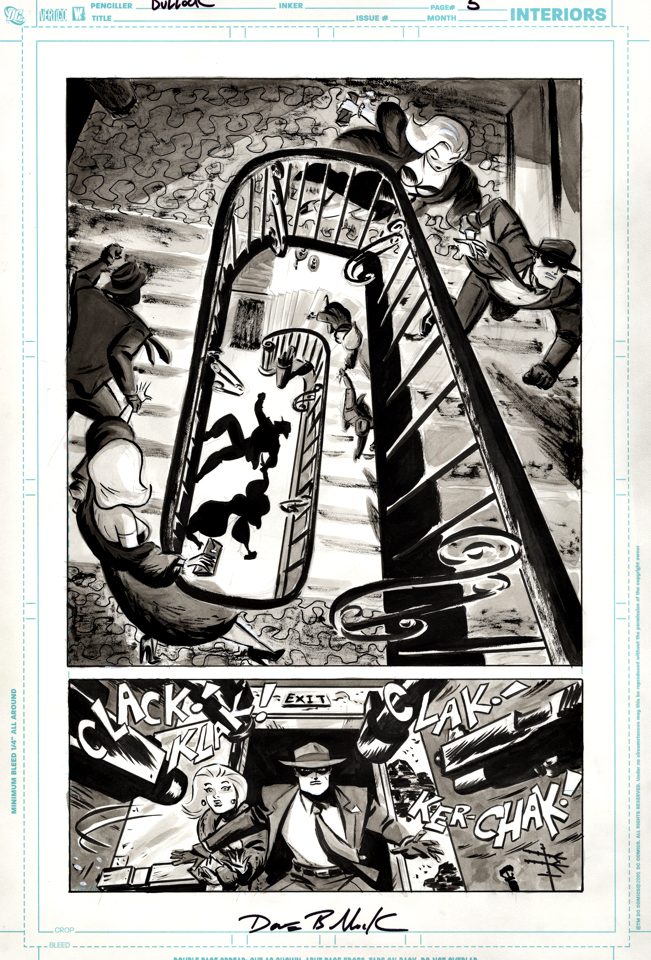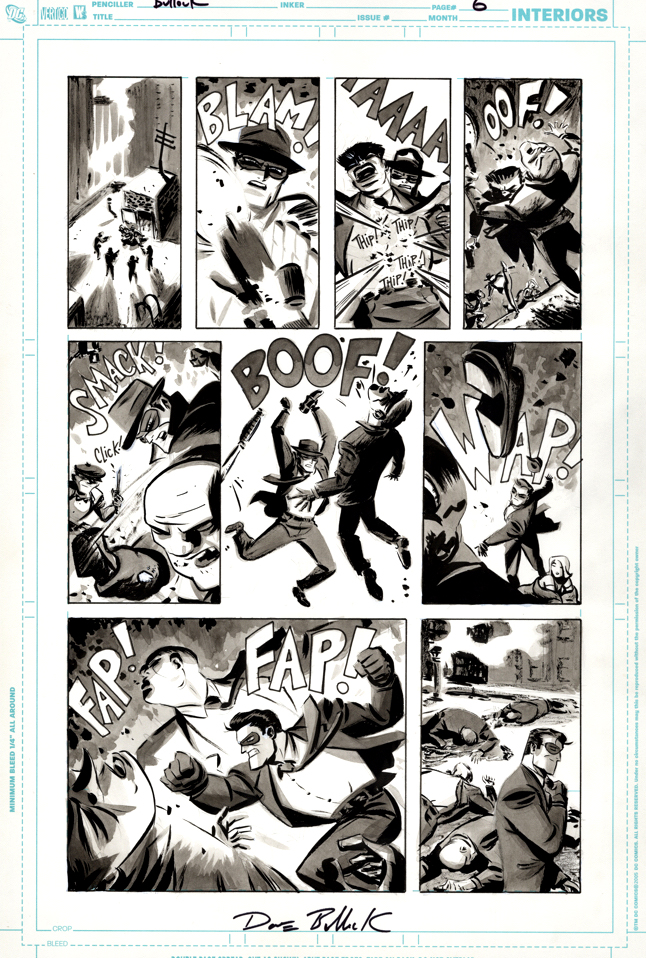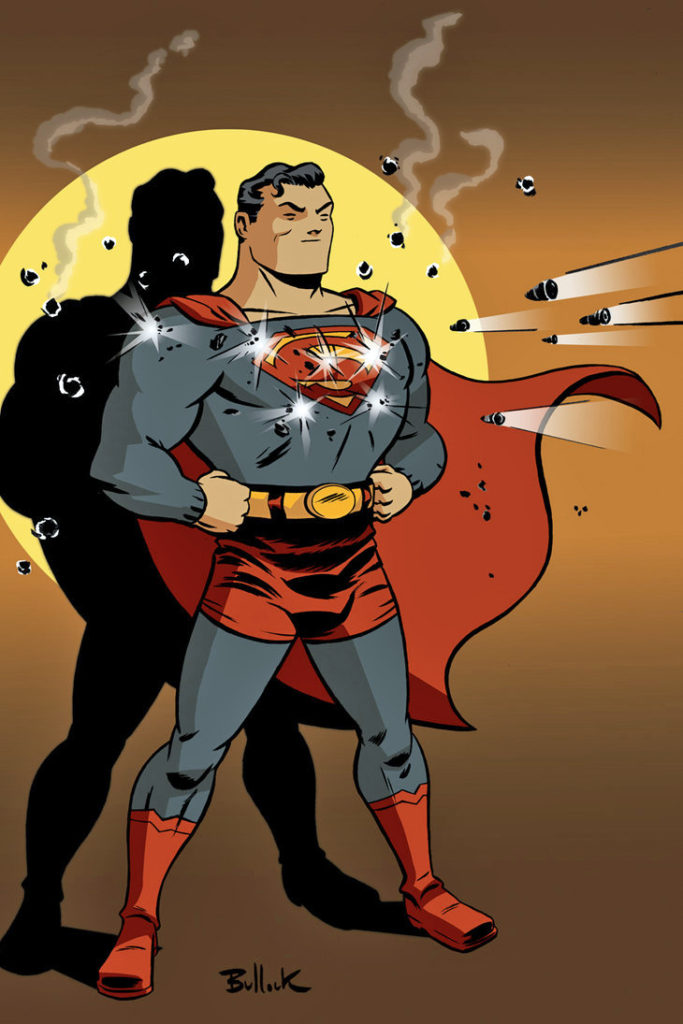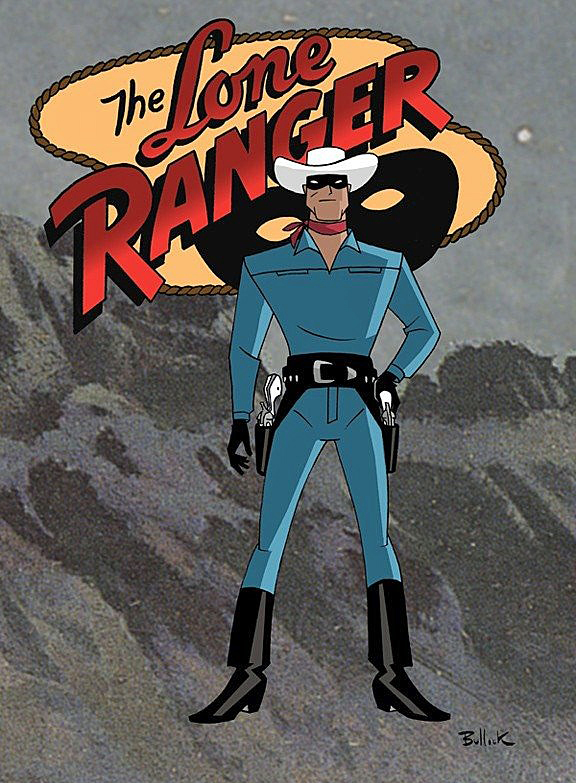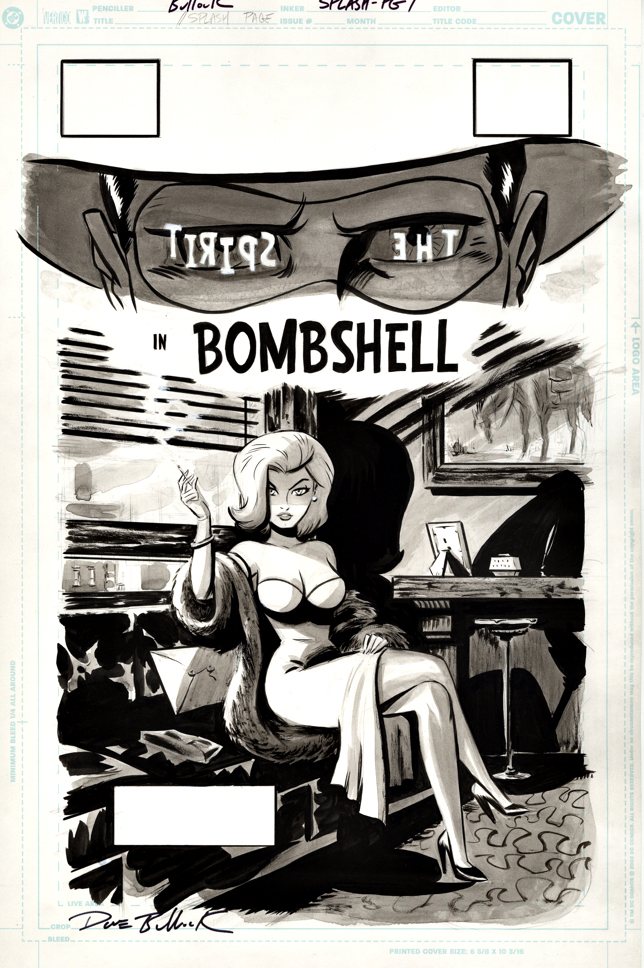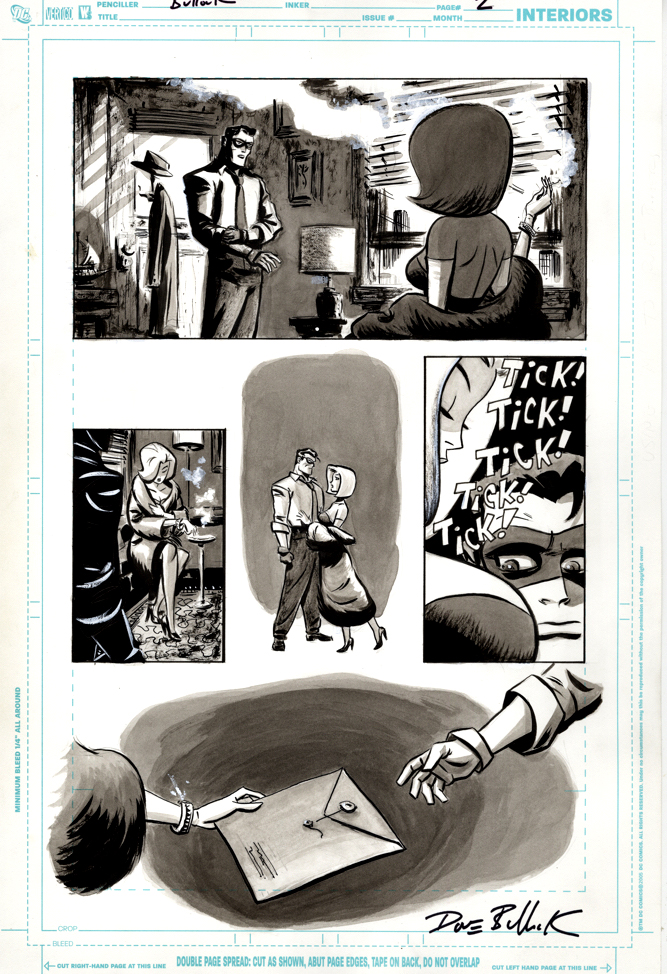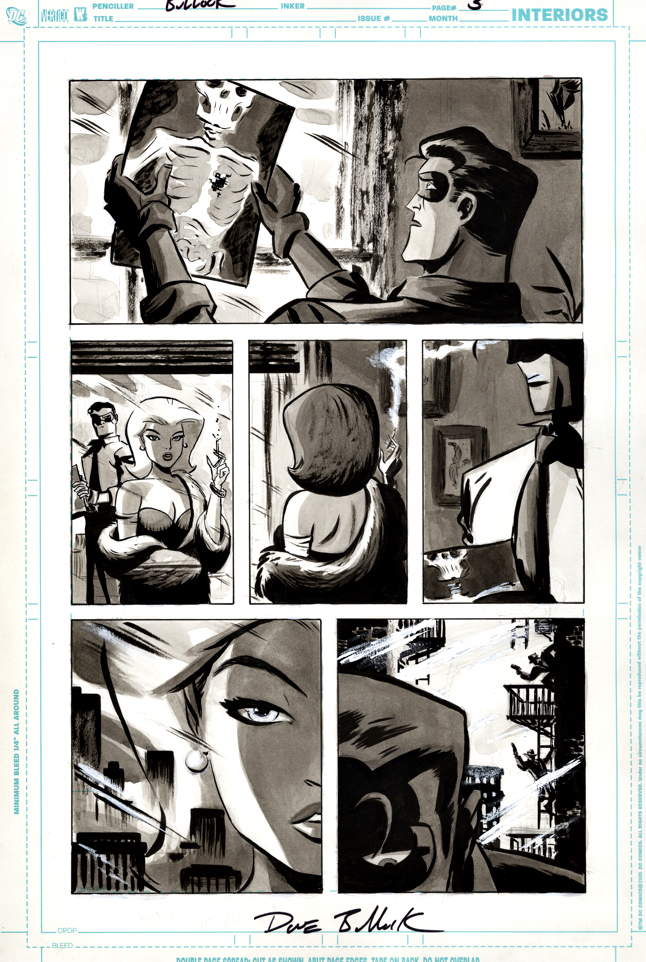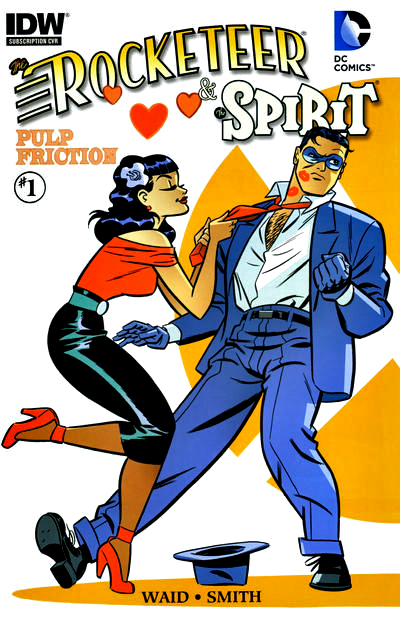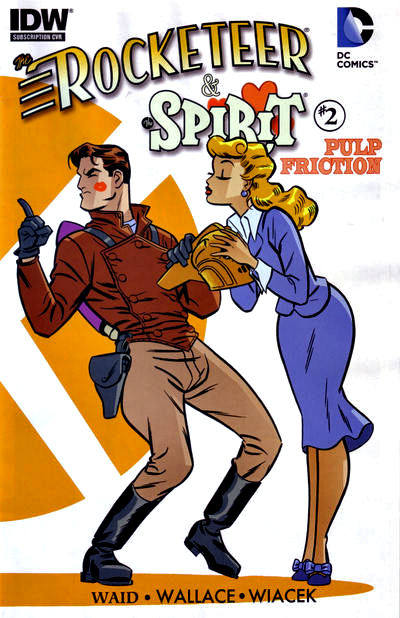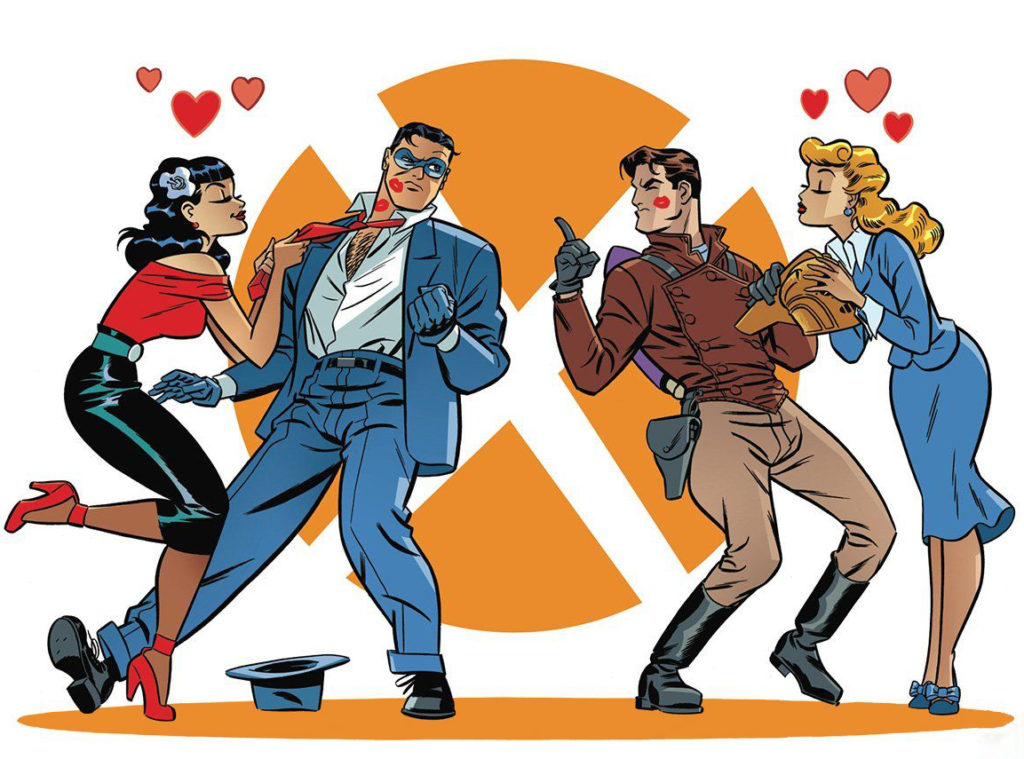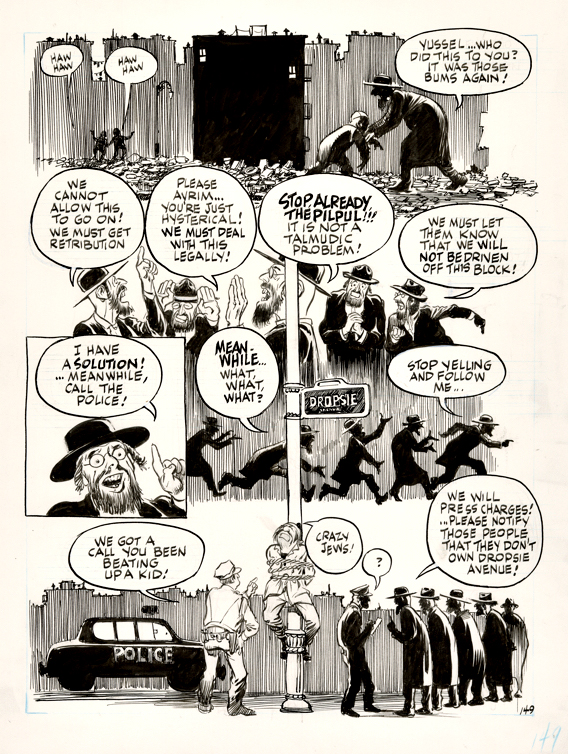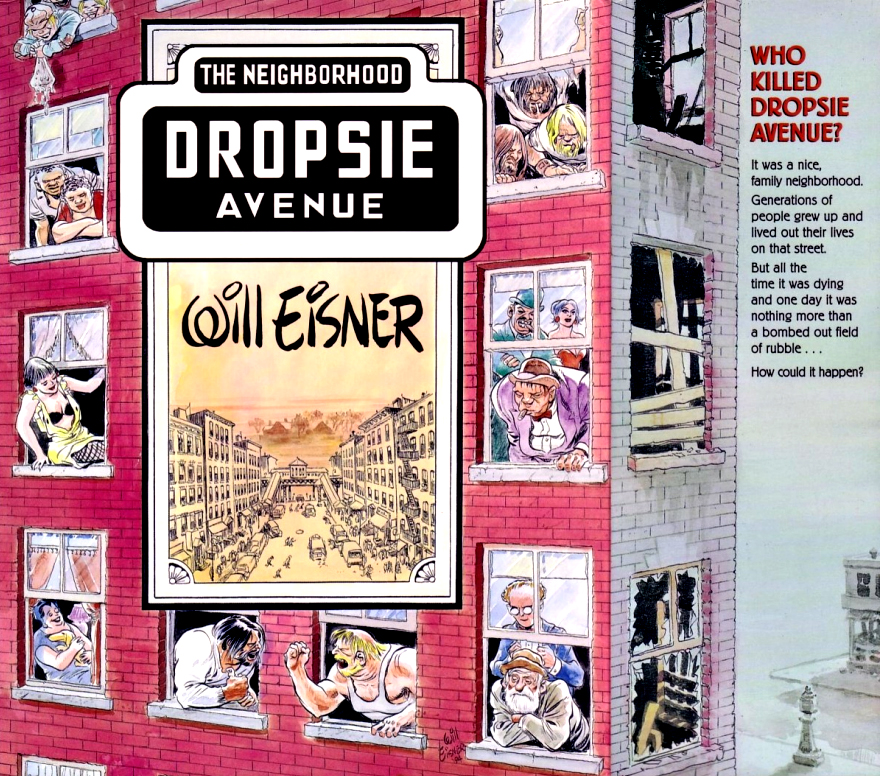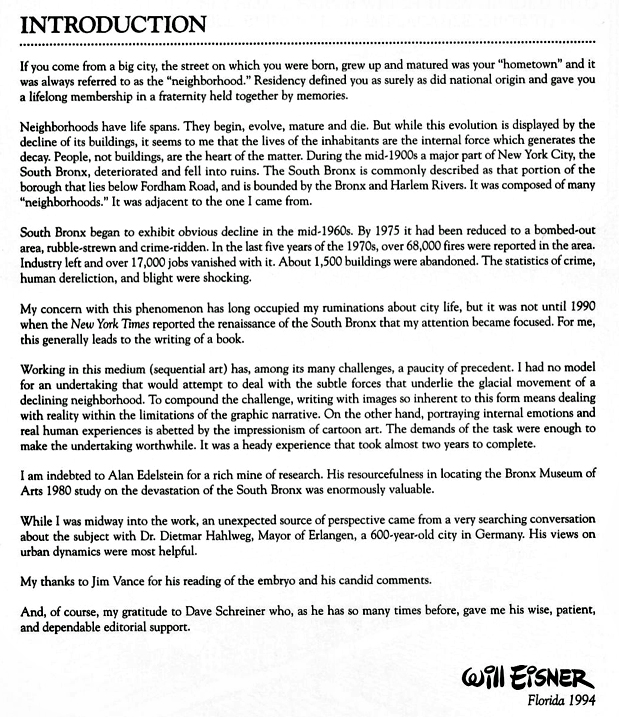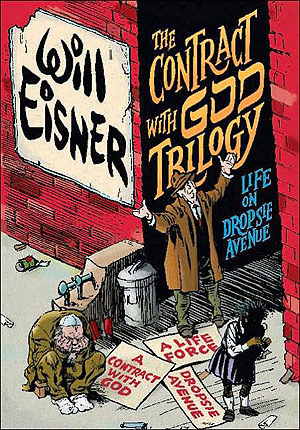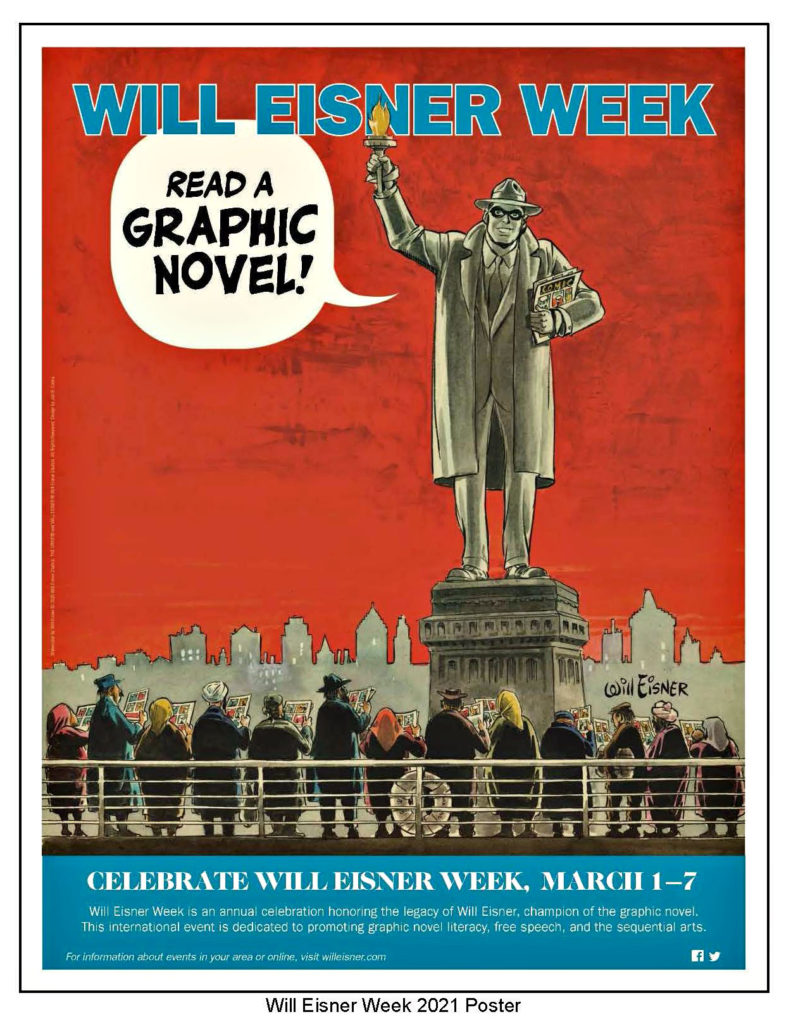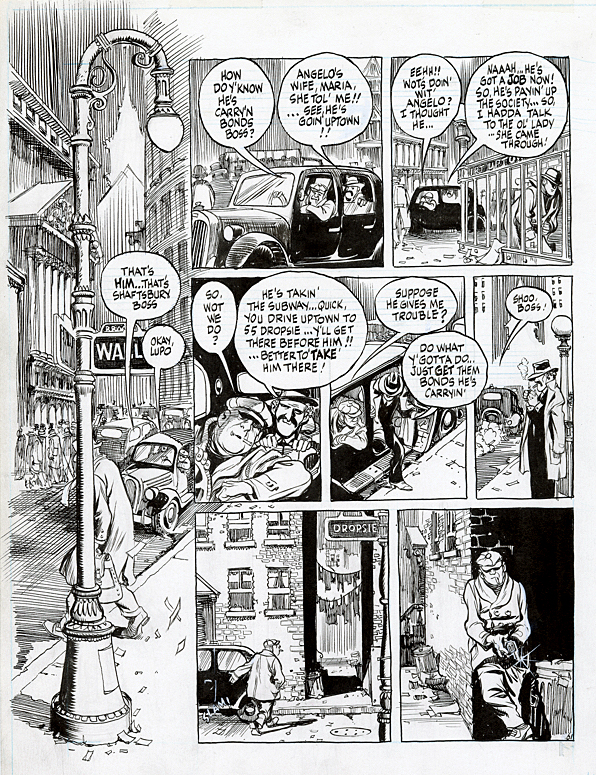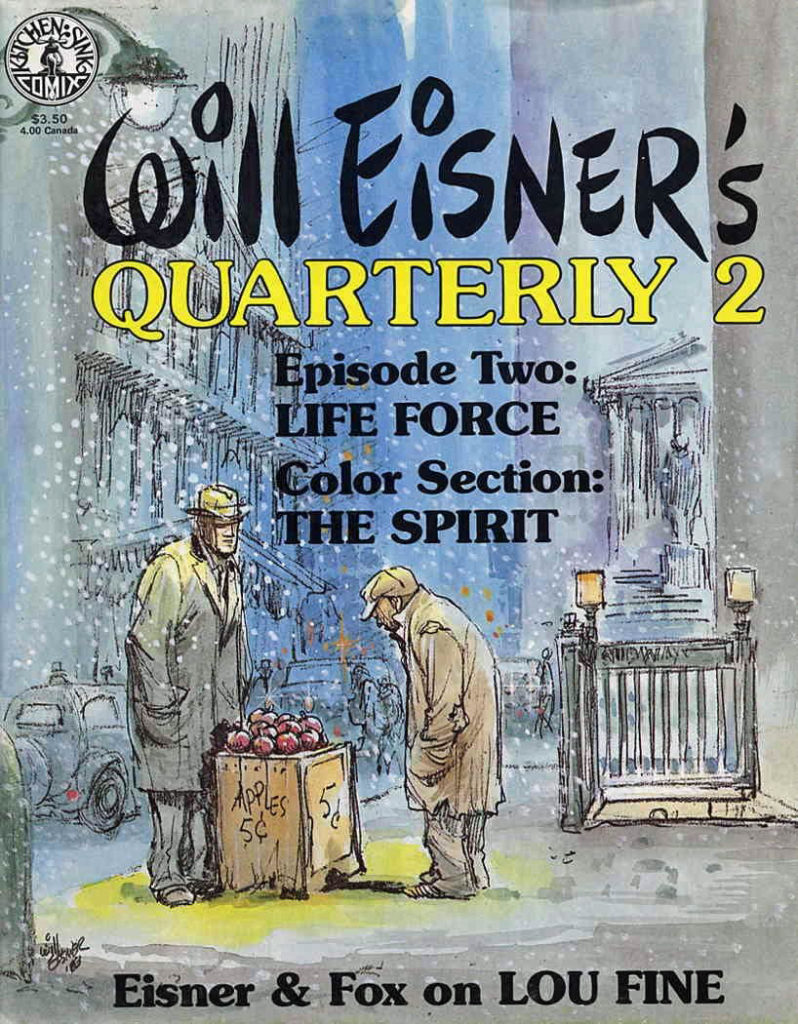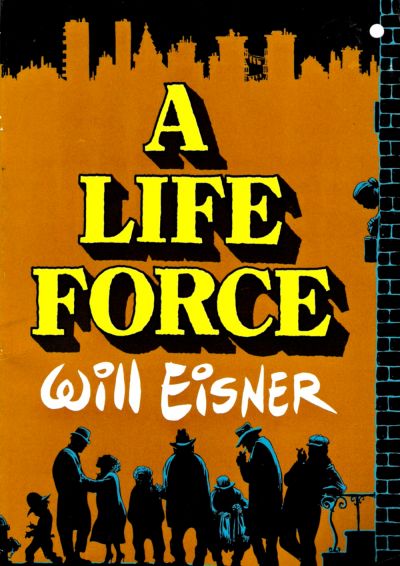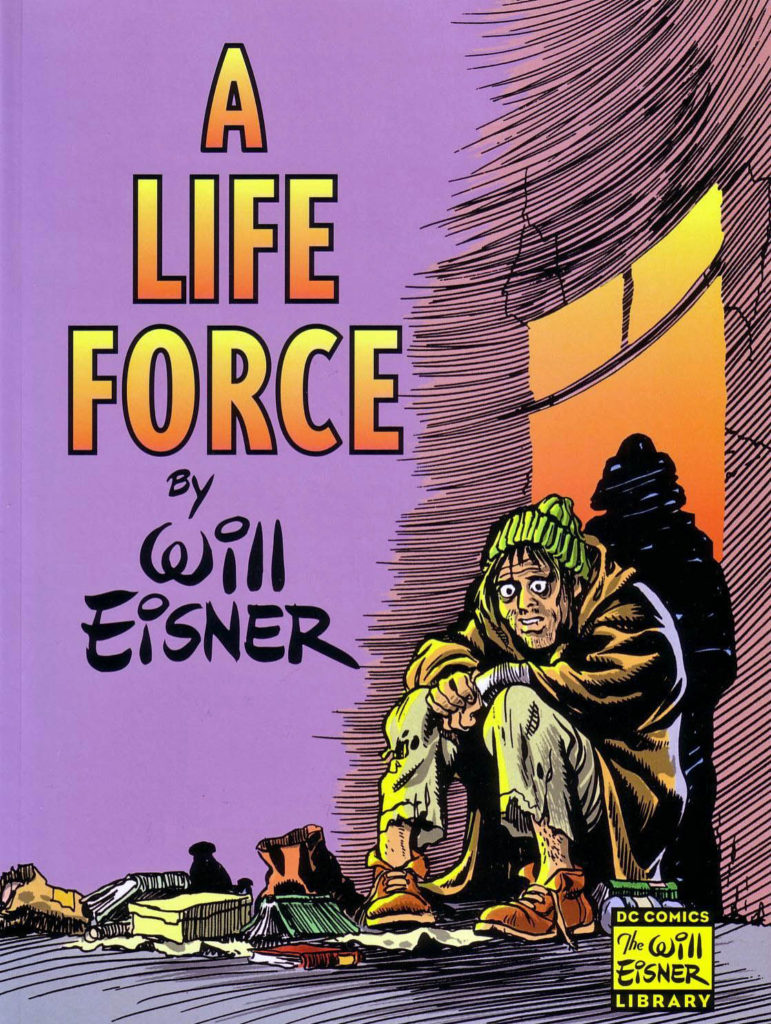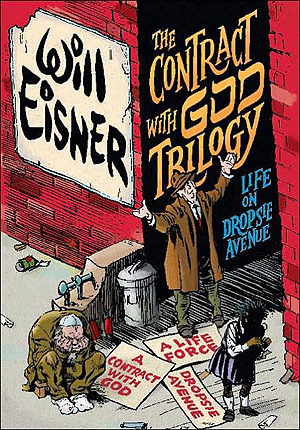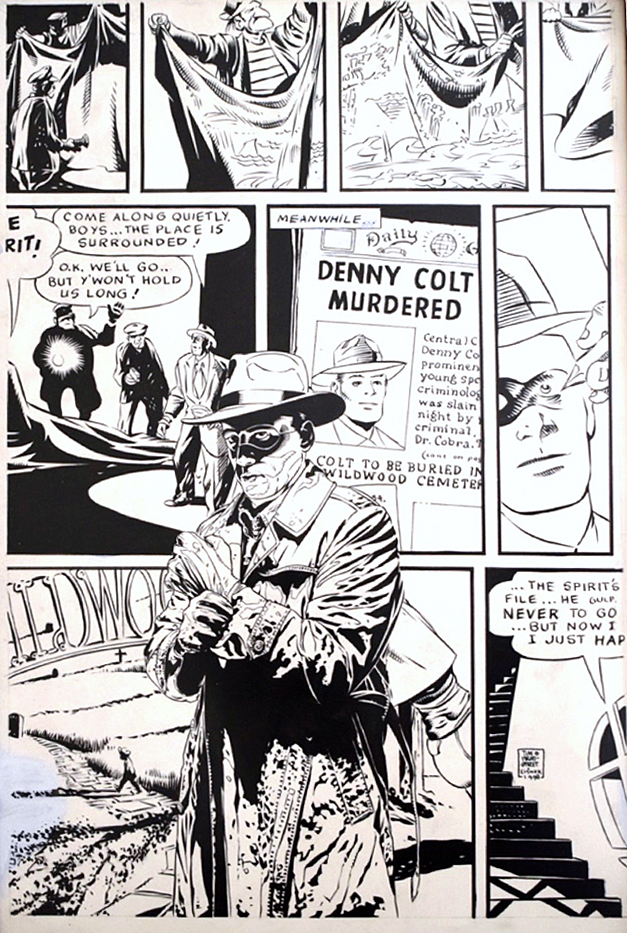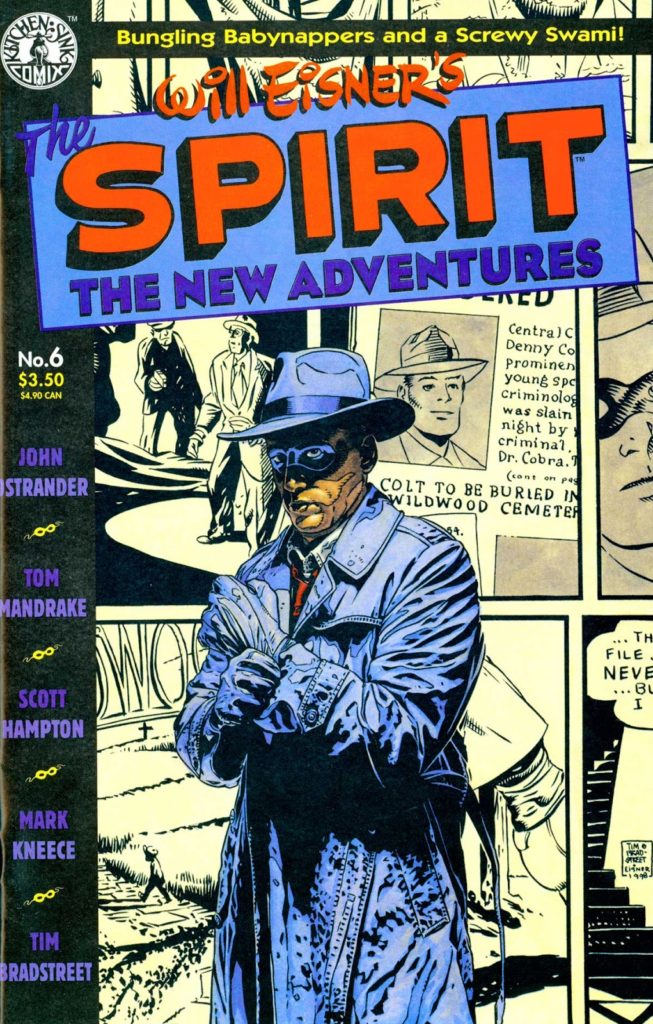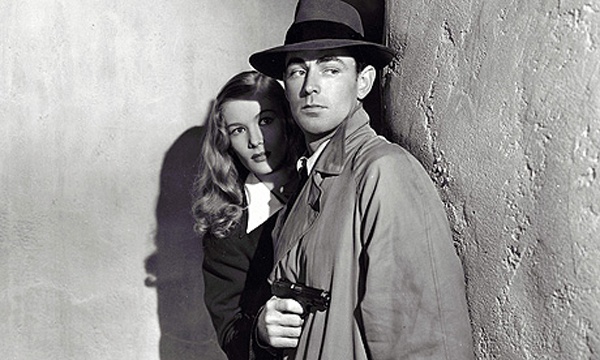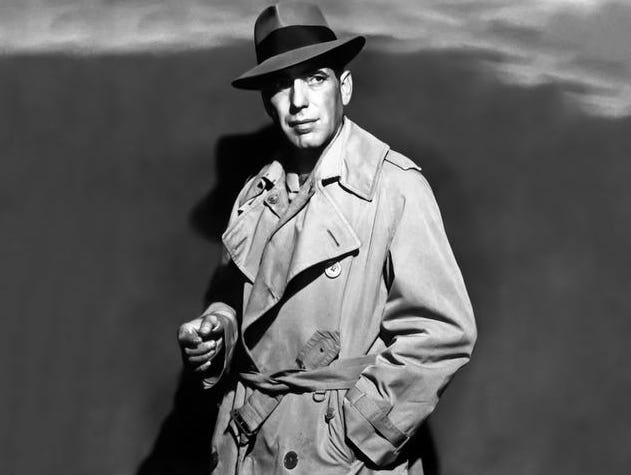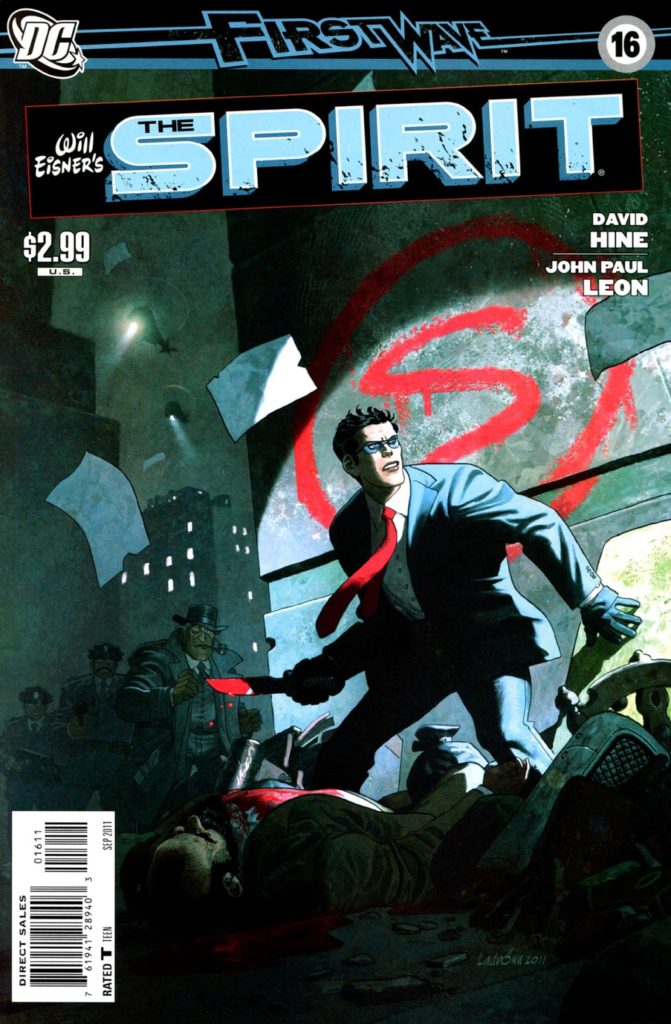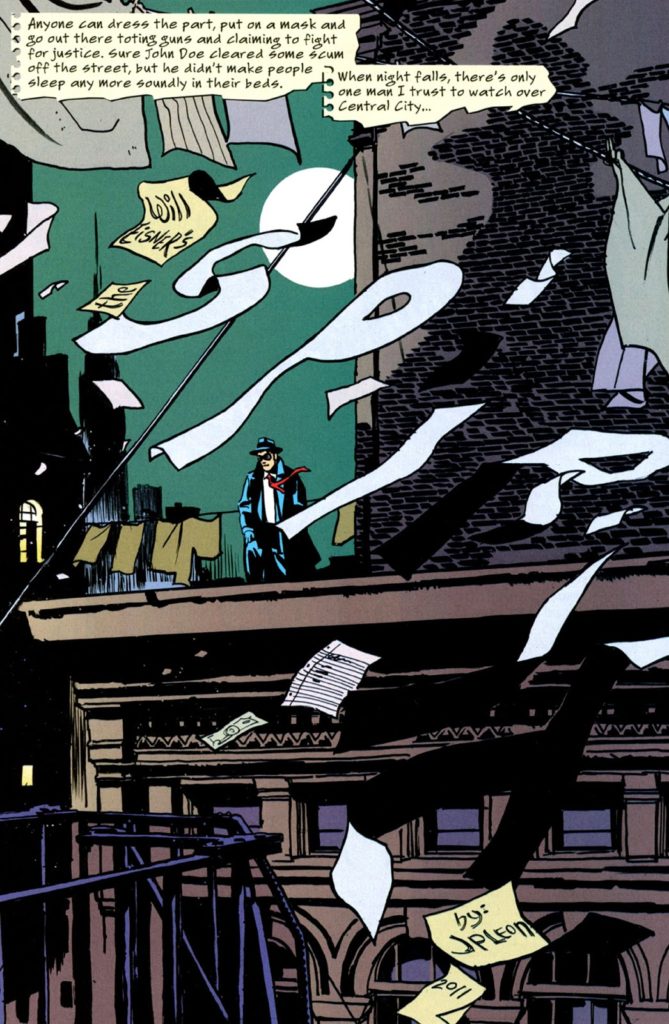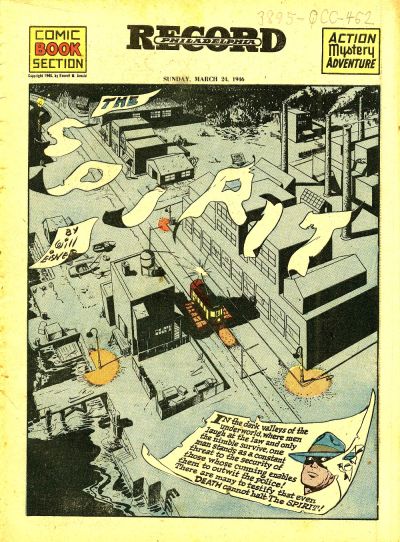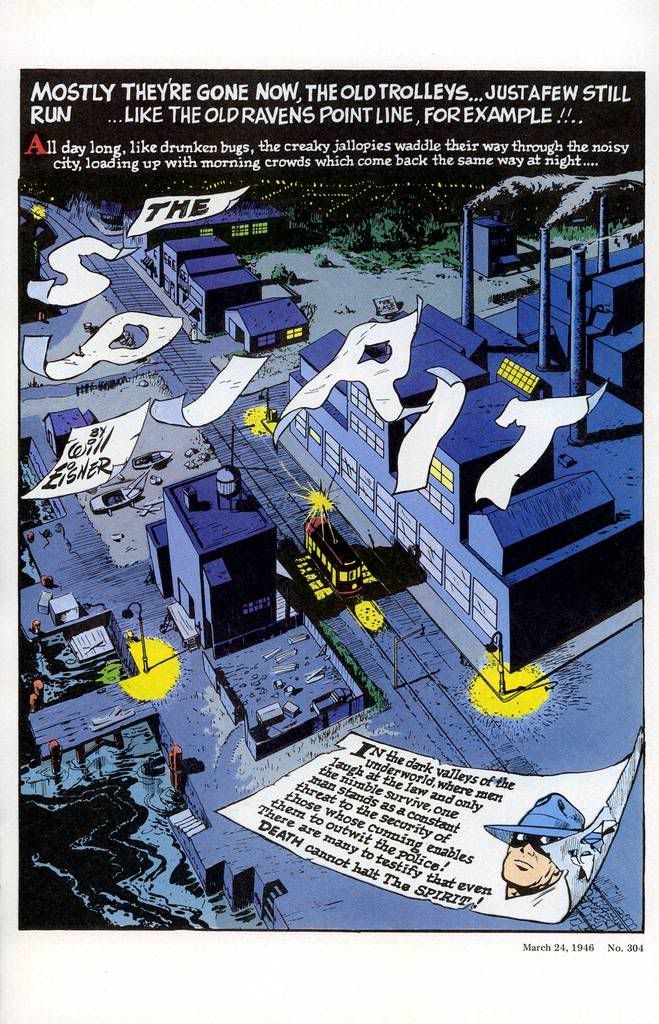Will Conrad — A Spirited Tribute
Spirit Commission, Tribute to Will Eisner, 2003
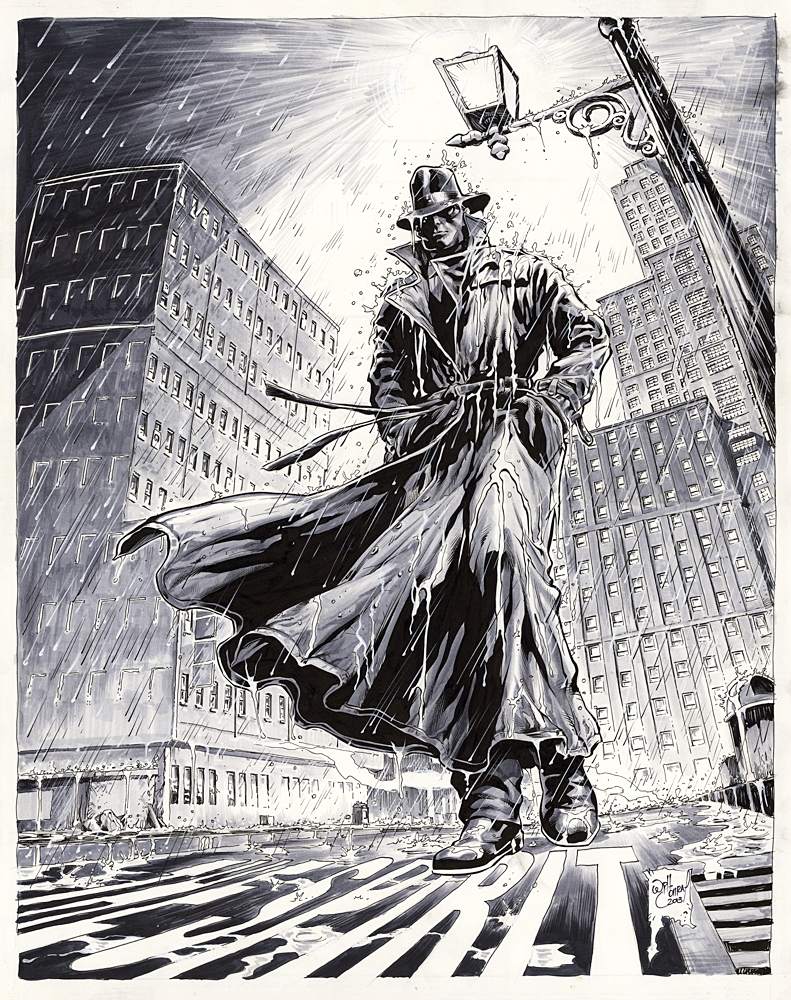
Celebrating “Will Eisner Week” and the 85th anniversary of The Spirit, with a repost of an early blog (2020). I finally framed this gorgeous piece a few weeks ago — and it’s even more stunning.
The very talented (and underrated) Brazilian artist Will Conrad is a self-professed Will Eisner geek. When he heard that Eisner would be attending a local convention, he labored over an over-sized Spirit piece to show Will, who was flattered and supportive.
Will held on to the piece for some time and tweaked it a bit to the point where he considered it “finished.” He knew how much I loved it, and after some unusual patience on my part, he ultimately let it go. (Thanks, Will!)
“Sometimes Eisner used an empty street as part of the story. When he drew fog, the page was damp.
And the rain, always the rain, dripping off everything including the Spirit logo. He lingered over environments until you could almost smell the cheap hotel rooms, taste the tension, or feel on your flesh the chilly pall of a rain swept street.”
— Jim Steranko, History of The Comics, Volume 2
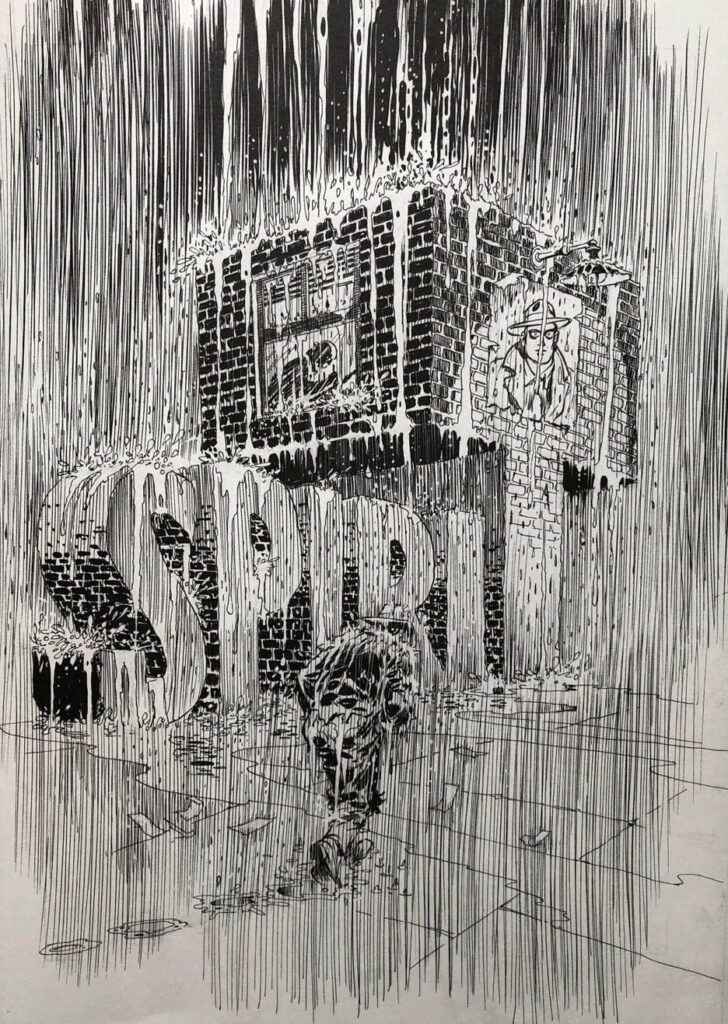
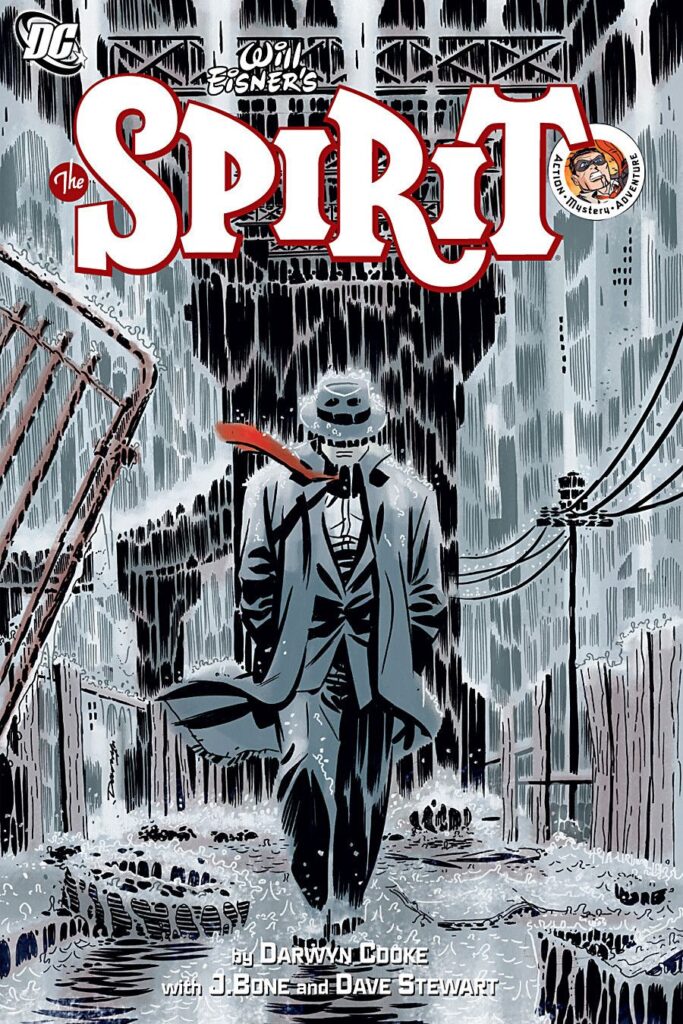
Raining on his parade — Eisner’s Spirit page from 1996 and Darwyn Cooke’s cover from 2009.

